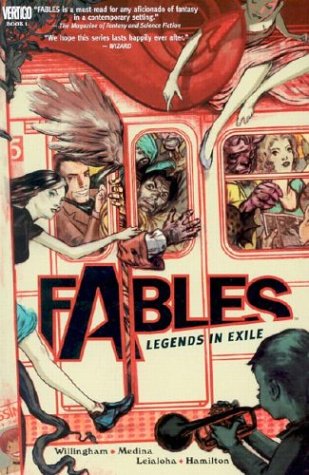
Title: Fables: Legends in Exile
Author: Bill Willingham
Illustrator: Lan Medina
Publisher: Vertigo
Media Format: Graphic Novel
Genre: Graphic Novel, Mystery
Selection Source: The Lair
Reading Audience: 16+
Reading Recommendation: 3 ***
Curriculum Connection: none
Summary
Fables is a series of graphic novels that takes classic fairy tales and twists them. The first volume in that series is Legends in Exile. It introduces us to characters such as Snow White, the Big Bad Wolf (Bigby), Bluebeard, Jack (of beanstalk fame) and Prince Charming. Snow White's sister, Rose Red has been murdered, and Bigby is on the case.
The first volume in this series spends a lot of time introducing us to many of the characters, and explaining how they came to live in modern day Manhattan. Their lives have turned from a fairy tale into a soap opera. As Bigby goes from suspect to suspect, we find out these characters have had a lot of opportunities to make a lot of mistakes and enemies in the last couple of hundred years. Half the fun of the book is to recognize the allusions to various stories, some subtle and some obvious. It also does well as a mystery even poking fun at the genre as Bigby does his parlor scene where he outs the suspects and explains everything to the willing audience.
Evaluation
This is definitely a book for older teens. There's violence and sexual situations. It's a good book to introduce them to the adult comic. The plot is relatively straightforward and they will enjoy seeing Goody two shoes fairy tale characters in precarious positions. It's a good way to lift the veil of childhood illusions of innocence about the world.
